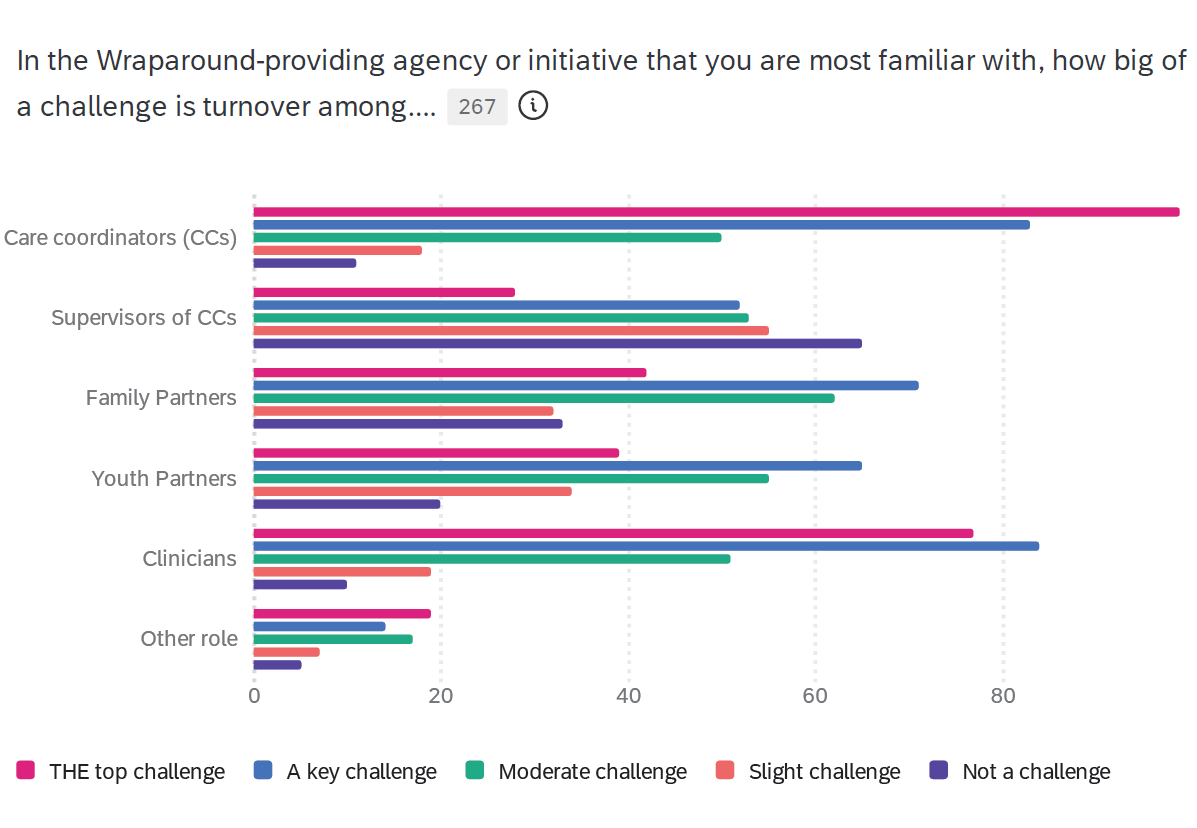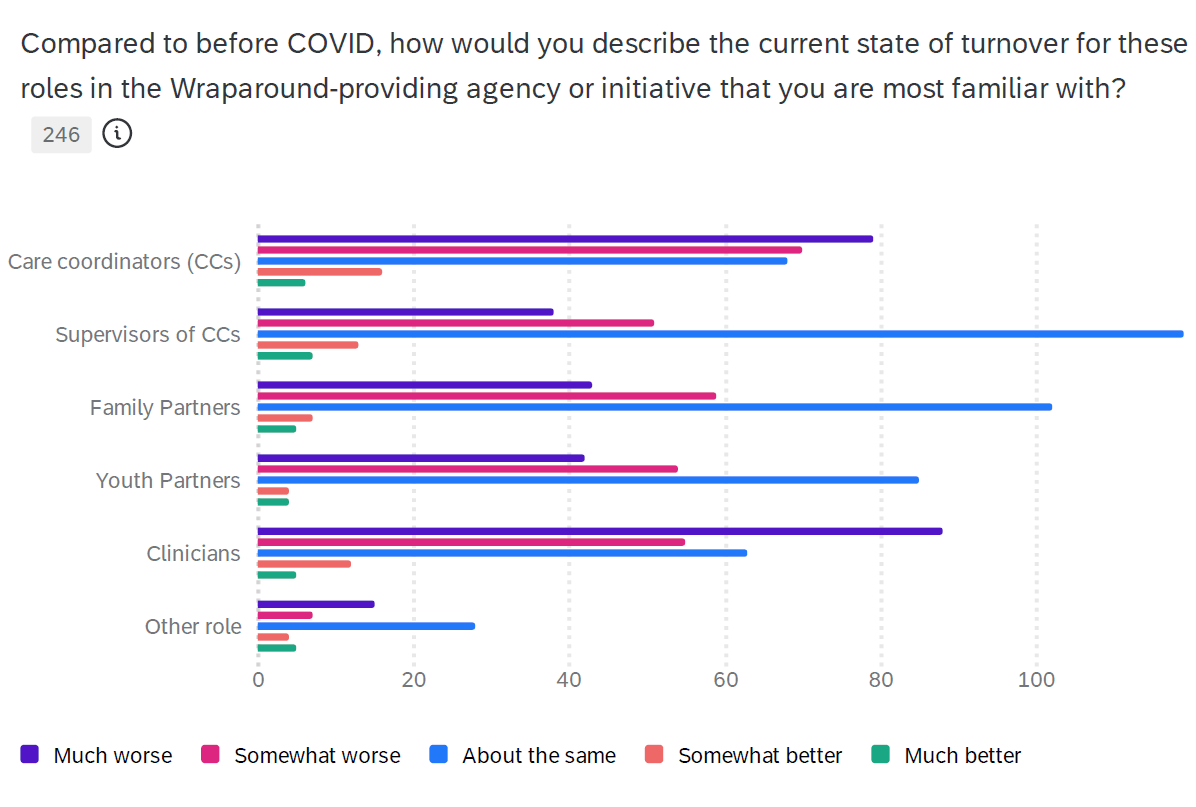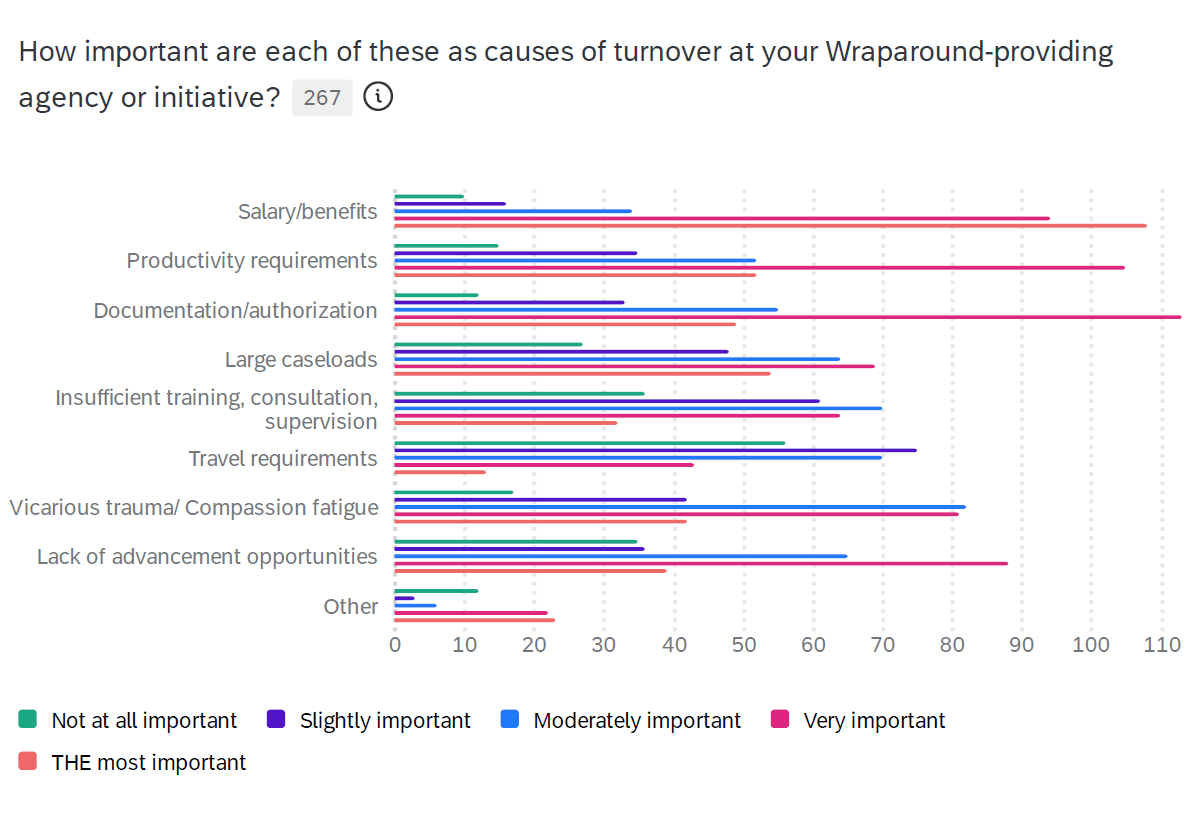Wraparound Blog
NWI Quick Survey Findings: What do Staff Say about Turnover in Wraparound?
February 03, 2024 | NWI
Staff turnover in child- and family-serving mental health agencies has negative impacts on quality of care and outcomes, and undermines staff morale. What is more, the cost of replacing a worker is typically about 20-30 percent of annual salary, placing a burden on agency finances.
Prior to the COVID-19 pandemic, research found that public mental health services typically experienced turnover rates of at least 20–30 percent. New research shows that turnover across the behavioral health workforce increased during the pandemic and has remained higher overall than pre-pandemic levels.
In 2017, the National Wraparound Initiative studied turnover among care coordinators, and produced a report examining turnover rates, causes and remedies. Now, post-pandemic, a team from the University of Connecticut’s Innovations Institute will be leading a new research initiative to re-examine the topic. As a first step to inform the new initiative, the NWI team put together a short, informal survey to gather initial thoughts from the field. We received 272 complete responses.
There were two main goals for the survey. First, we wanted to get a basic sense of where the biggest challenges lie. This information will help us prioritize the areas for further examination in our upcoming research. This blog will cover what survey respondents said about biggest challenges.
The second main goal of the survey was to encourage respondents to share their more detailed thoughts about various aspects of turnover, including causes and possible solutions. Many respondents provided thoughtful responses to the open-ended questions on the survey, and the research team will take time to consider these in depth as we develop our strategy for next steps.
Survey Findings
In comparison to other roles within Wraparound, turnover among care coordinators was seen by respondents as the most serious challenge. More than a third of respondents (38%) identified turnover among care coordinators as the top challenge within their agency or initiative, and almost another third (32%) rated it as a key challenge. Regarding other roles, turnover among clinicians was seen as the second most serious challenge, while turnover among supervisors of care coordinators was seen as the least serious challenge.
Figure 1. Challenge of turnover among various Wraparound roles
Click image to open larger version
On average, across all roles in Wraparound, respondents saw turnover as a bigger problem now than prior to the COVID pandemic. Respondents saw the situation with turnover worsening most among clinicians, with 39% describing the situation as “much worse” and 25 % describing it as “somewhat worse.” Turnover was seen as worsening to a similar extent among care coordinators, with 34% of respondents saying the situation was “much worse” and 30% saying it was “somewhat worse.” In both cases, of course, that left the remaining respondents saying that the situation was the same or even better as compared to before the pandemic.
Figure 2. State of turnover among various Wraparound roles post-COVID
Click image to open larger version
Salary/benefits was seen as the top cause of turnover, with 41% of respondents seeing it as the most important cause and 36% seeing it as a “very important” cause. Documentation/authorization and productivity requirements had similar ratings as the next most important causes of turnover. Productivity was seen as the most important cause by 20% of respondents, and as a very important cause by 41%. The ratings for documentation/authorization were 19% most important and 43% very important.
Figure 3. Reasons for turnover among staff in Wraparound-providing organizations
Click image to open larger version
More than half of the respondents reported that their agencies had taken substantial steps in an effort to address turnover. In fact, 21% said their agency had taken “important steps,” while another 37% said their agencies had taken “some” meaningful steps. In their comments, a number of respondents said that their agencies had been able to increase pay and/or provide periodic retention bonuses. Others described policy changes or enhancements to electronic record keeping that led to decreasing the burden of documentation. In addition, there was a large number of suggestions offered by respondents in their open-ended comments at the conclusion of the survey. In the coming months, the NWI team will continue to examine the challenges related to turnover, and to draw on the accumulated wisdom held by the Wraparound workforce across the nation to develop better information about the challenges associated with turnover, and possible solutions. Many thanks to all of you who responded to the survey for helping us get started with this work!



